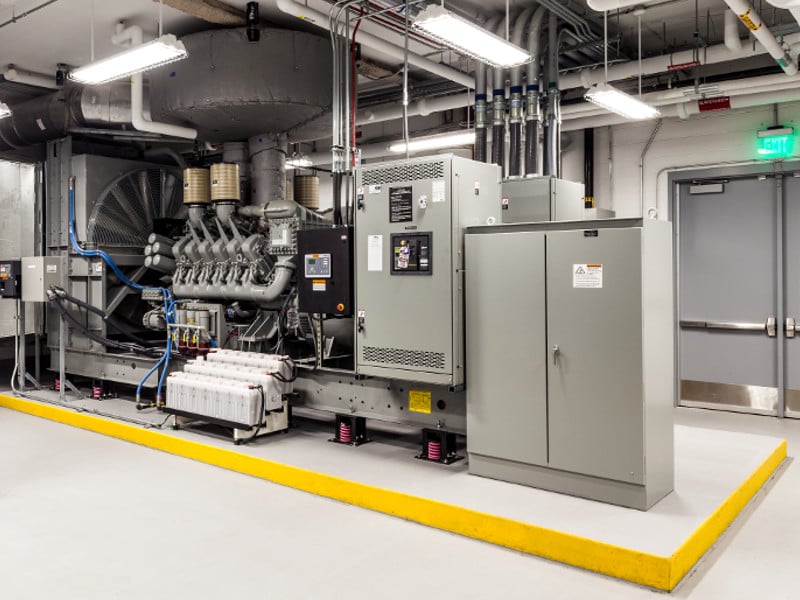National Fire Protection Association Standard 110 (NFPA 110), the Standard for Emergency and Standby Power Systems, contains requirements covering the installation and performance of backup power systems in critical applications where a power outage would create a life safety risk such as those in healthcare facilities.
Power systems covered in this standard include power sources (generator sets), conductors (wires and cables), disconnecting and overcurrent protective devices (circuit breakers), transfer switch equipment (ATS’s), controls (control panels and paralleling switchgear), supervisory equipment (remote annunciators and remote monitoring), and accessory equipment (block heaters, battery chargers, fuel systems, etc.) needed to supply electrical power to the selected circuits. These components together are known as the emergency power supply system (EPSS).
The scope includes installation, inspection, maintenance, and testing requirements as they pertain to the EPSS up to the load terminals of the transfer switch. Beyond that, the electrical distribution system is covered by NFPA 70, National Electrical Code (NEC) and NFPA 99, Health Care Facilities Code. Together, these codes form the fundamental standards for emergency backup and legally required standby power systems. NFPA 37, Standard for the Installation and Use of Stationary Combustion Engines and Gas Turbines covers the general installation of a diesel generator. Depending on the specific site conditions,equipment, and use of the system, other NFPA standards may also apply.
Individual products or power system components cannot be marked as NFPA 110 compliant. The overall EPSS must be installed, operated, maintained, and tested in accordance with NFPA 110 standard to be compliant.
Complying with NFPA 110 is considered a “best practice” when designing, installing, inspecting, maintaining, and testing backup power systems. However, only systems designated Level 1 or Level 2 are legally required to comply with the standard, as their operation is necessary to protect human life. While NFPA 110 applies to required emergency and standby power systems, it can be voluntarily applied to optional standby systems where an outage could result in a large economic loss or an extended business interruption. Designers and facility managers need to carefully consider code compliance, ease of maintenance, and economics when adopting NFPA 110 standards to critical facilities.
NFPA 110 is revised every three years. The most current version is NFPA 110-2019. However, many local Authorities Having Jurisdiction (AHJ) still recognize NFPA 110-2016, or in some cases earlier versions. There are some minor revisions to the 2016 edition including:
- Location and access to the remote emergency stop switch have been clarified.
- Clarified testing of fuel in accordance with the manufacturer’s recommendations.
- Battery charger specifications have been clarified as well.
The NFPA 110 standard provides requirements and best practices for the installation and ongoing performance of the EPSS to ensure that they are able to provide a reliable source of electrical power.
NFPA 110-2019 and NFPA 110-2016 are divided into eight chapters and three annexes:
- Chapters 1 through 3 - Introduction to NFPA 110
- Chapter 4 - Classification of Emergency Power Supply Systems (EPSSs)
- Chapter 5 - Emergency Power Supply (EPS): Energy Sources, Converters, and Accessories
- Chapter 6 - Transfer Switch Equipment
- Chapter 7 - Installation and Environmental Considerations
- Chapter 8 - Routine Maintenance and Operational Testing
- Annex A - Explanatory Material
- Annex B - Diagrams of Typical Systems
- Annex C - Informational References
.png)






